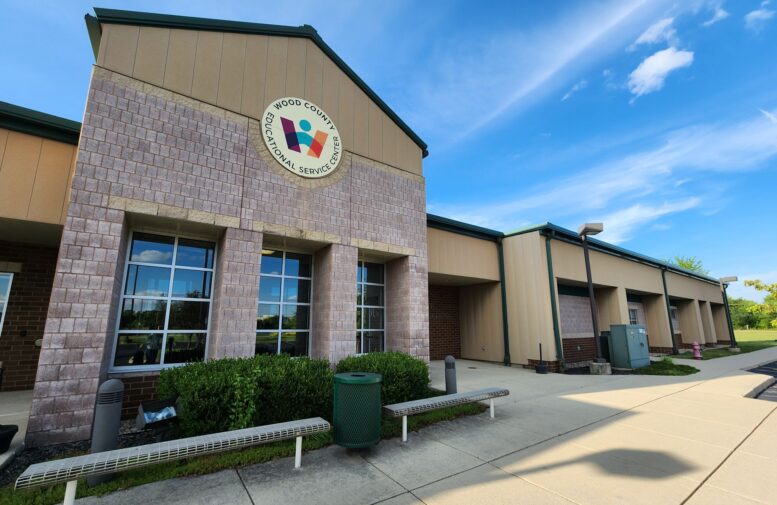By JULIE CARLE
BG Independent News
The Wood County Alcohol, Drug Addiction and Mental Health Services Board supports the prevention programs of the Wood County Educational Services Center because they have proven to work.
During a recent WCADAMHS board meeting, Angela Patchen, WCESC prevention program manager, said nearly 17,000 youths from kindergarten through 12th grade are in the nine school districts served by the agency. All the schools have access to a prevention education specialist.
“We’re not doing treatment or any counseling. We are really focused on trying to prevent concerns before they happen or to intervene early on,” she said.
The prevention education program dates to the 2003-04 school year, starting with a life skills program. The county board funds about 85% and the schools contribute about 15%. The agency also seeks grant funding when applicable.
Today, WCESC helps schools address issues that the Ohio Department of Education and Workforce requires including drugs and alcohol, suicide prevention, violence prevention, sexual abuse prevention, dating violence. The state doesn’t provide funding or train teachers; instead, schools are expected to figure out how to fulfill the prevention requirements. That’s where WCESC comes into the school districts to help meet the requirements.
“We are educating kids on the dangers and risk factors,” she said. “If they need more, we refer them to other agencies.”
There are significant cost savings by investing in prevention, she said. “For every dollar that the board puts into prevention, you get quite a reduction in later costs by investing in prevention.”
The biennial Youth Survey on Addiction and Mental Health survey by Dr. Bill Ivoska identifies the successes and the needs in the community. The prevention staff utilizes the survey data to see what’s happening in the schools and how their programming can help. If they hear that there is a vaping problem with seventh graders, they know they need to do vaping prevention in fifth and sixth grade.
The Educational Service Center also collaborates with many of the other local providers to provide different voices and perspectives. “We are all playing in the sandbox well together,” Patchen said. “We make sure that they’re not doing the same thing or that we are stepping on each other’s toes.”
The center’s community engagement services previously had three staff members doing the work supported by grant funding. Among those efforts include the Kinship Care support group, Prevention Coalition, and community-based diversion screeners/speakers. Because the funding has changed, WCESC is asking the county board to support community engagement programming.
An intervention and diversion program in partnership with the juvenile justice system had an initial goal to serve 75 families. By the end of the first year, they had worked with 205 youths or 273% of the goal. “Only 10 of those cases that we opened were referred to the juvenile court,” she said. “This allows the courts to spend more time on the really big cases.”
The numbers have stayed fairly consistent in the three years of the program. With some of the funds ending, the center is “looking for funds to replace those funds,” Patchen said.
Diversion screener Emma Gray said truancy is often the issue that comes to their attention from the schools first. “We’re finding much deeper, bigger concerns than just not going to school,” she said. “There’s lots of anxiety and mental health issues. Kids are worried about a parent that is ill, so they are staying home to keep an eye on their parents.”
She also talked about an increase in homelessness and students running away from home. Some of the students had been truant because they were homeless, or if they are homeless when WCESC learns about them, the center gets them connected with the resources they need,
WCESC 2026 allocation proposal
Wood County ESC’s allocation proposal for 2026 combines the prevention and diversion programming into one request, said Kyle Clark, WCESC prevention education director.
Sarah Nidiffer, family and community liaison, has taken on several programs that were handled by several individuals previously, reducing the original proposal from $317,000 to $194,000, Clark explained.
“We have also scaled back all of our marketing, advertising and community events,” he said. “We’re going to scale back on things that cost money, purchasing fewer Red Ribbon Week materials, and we have cut our supplemental contracts by 70%.”
Additionally, they have placed a cap on travel, professional development, and training, reduced professional membership expenses, and eliminated the gambling prevention funds by utilizing staff at the center to manage.
Their current request for funds in 2026 is $1,165,777, compared to $1,057,510 approved for fiscal year 2025.
In January, Wood County ESC was the only provider that did not receive information about the expected 8% budget cuts.
“When we told them we were doing reductions this year, we weren’t really sure where we would land by picking up the diversion program,” said WCADAMHS Executive Director Amanda Kern. “I wanted to be able to recommend the diversion program because of the overwhelming numbers they produced, as well as the reports from the schools.”
WCESC has applied for grant funding, which should decrease the ask by $40,000, and there are additional funds that could be reduced “if that is where the board wants to see us go,” Kern added. “But that is getting them almost back to flat funding from last year to this year.”
Also during the meeting, the board, which advocates, plans, develops, funds, manages, and evaluates community-based mental health and addiction prevention treatment and recovery services in Wood County, approved the strategic plan, effective for the next 12 months. The plan’s focus is to champion inclusive, accessible behavioral health care with four goals:
- Facilitate efficient, effective and accountable prevention, treatment and recovery services
- Focus on community education, outreach, accessibility and support.
- Continually improve internal board operations
- Use data and technology to drive change.
In other business, the board:
- Adopted updated policies and procedures for finance, operations and public affairs to enable the board to achieve the Ohio Association of County Behavioral Health Authorities’ Culture of Quality certification.
- Approved the proposed administrative budget for fiscal year 2026, totaling $1,181,172.18.
- Revised the table of organization that includes the Wood County Commissioners, Wood County citizens and the Ohio Department of Mental Health and Addiction Services at the top, followed by the Board of Directors. The WCADAMHS staff, which reports to the board, includes the executive director; associate director, expanded role for the finance director that includes the new title; administrative & fiscal specialist; director of clinical & prevention programs; director of planning & evaluation; manager of marketing & communication; accounting and benefits specialist; and systems navigator, a new position added earlier this year.





